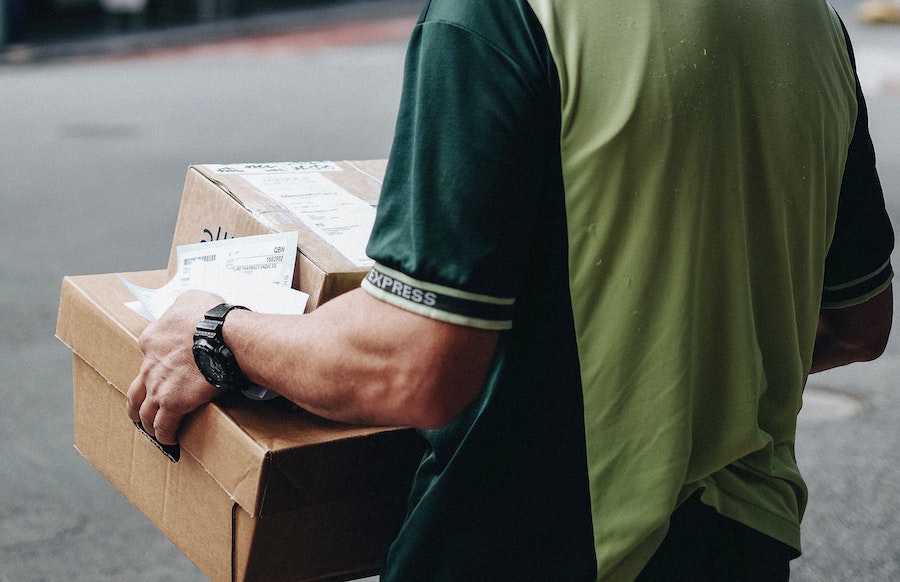How to streamline your operations for new delivery and logistics employees

It has recently been reported that thousands from Covid-blighted jobs are joining the logistics industry.
And that’s not surprising, as home deliveries are one of the few sectors within the British economy to grow throughout 2020. The pandemic has accelerated already existing trends, with more people than ever ordering goods and groceries online, while delivery companies and supermarkets struggle to keep up with the demand and overwhelm.
In fact, the latest figures collated by IMRG show online sales are up by more than a half in the middle of November from the same point last year.
Delivery and logistics businesses have responded to this eCommerce boom by hiring thousands of new drivers, often from the parts of the economy that have been hardest hit by the pandemic
For example, recruitment agency, Manpower, has placed 3,000 new drivers in the last few months, with an estimated 30% turning to driving because due to the pandemic.
Jason Greaves, Manpower’s brand leader, says: “This year, entrants to the driving labour market are from a much broader range of sectors than normal; former cabin crew, publicans, live music support crew to name just a few.”
So how can logistics and delivery businesses ensure that they’re keeping on top of their operations with so many new employees entering their workforce?
Read on to hear our suggestions:
Streamline your processes
Regular planning and processes currently need regular reviews as new people enter the business. For businesses who are functioning with a new team, getting them up to speed with planning processes can quickly become complicated and time consuming.
That is why during any period of change and uncertainty we would recommend streamlining your planning and processes. Not only is this beneficial to navigate new recruitment challenges, but it also helps to future-proof businesses for the unknown.
For any business dealing with logistics and delivery, a great place to start is by streamlining that all-important delivery and route planning. By embracing new technology, systems and algorithms, businesses can produce efficient and reliable routes, fast.
Implement dynamic routes
Our next recommendation is for businesses dealing with a recruitment boom is to implement dynamic route optimisation, if they haven’t already.
Many businesses work on a fixed route basis – which raises significant challenges and limitations for drivers and planners dealing with an overwhelming amount of orders.
Technology such as MaxOptra automatically plans routes daily, weekly, monthly, or however frequently they require their dynamic schedule.
Algorithms produce efficient and reliable routes, quickly, and automatically take into account traffic conditions and known roadworks, as well as vehicle capacities, live order volumes and delivery time windows.
All of this supports businesses in avoiding any potential inefficiencies of fixed routes or manual planning, reduces their planning time and streamlines their processes. They can even cut operational costs by up to 20%!
Improve your delivery efficiency
Time is precious for when it comes to delivery routes, with drivers needing to make deliveries quickly and without delay. That’s why it is important to ensure that delivery vehicles are loaded correctly and logically, and that packages are accessible for the driver once they reach their destination.
Route optimisation systems will map out routes to ensure they are as efficient and cost effective as possible. It will also recommend the right vehicle for the job based on the space you need for the packages you’re carrying, ensuring the driver can work as quickly and effectively as possible.
Track your routes and deliveries
One of the challenges in hiring new drivers is ensuring that they’re following the routes to their best of their ability. Or if there is any room for improvement or support required.
For any business who is running a distribution fleet, it’s important to know what’s going on once the vehicles have left the depot.
Businesses can either link route optimisation systems to a vehicle telematics device, or utilise a driver app, such as what MaxOptra offers, to monitor what is going on in real time via track & trace functionality.
This on-the-day visibility enables businesses to proactively deal with any delays or issues as soon as they occur. At the end of the day this valuable data aids driver debriefing, route refinement, and management KPI reporting.
Implement a driver app
For paper-based operations, an increase in orders can result in an increase in documentation. This can quickly get messy.
We recommend that any business bringing on new recruits should look into implementing a driver app, such as the MaxOptra iOS and Android app. This will allow businesses to run a paperless operation whilst automatically pushing jobs to their drivers.
Businesses will also be able to track delivery and driver progress, whilst dealing with any issues and amends in real time.
For added peace of mind, our driver apps which incorporate ePod functionality allows drivers to log proof of delivery signatures, photos and comments.
Overall, a driver app will streamline the entire delivery process – ensuring businesses can keep on top of their routes, drivers, deliveries and documentation.
Get in touch!
If you’d like more advice on support on how to best get your new logistics and delivery employees up and running. Or how to best set up your processes for them. Then get in touch.
Our friendly team are always on hand for a chat
Maxoptra System
© MaxOptra, 2023. Privacy Policy and Cookies
